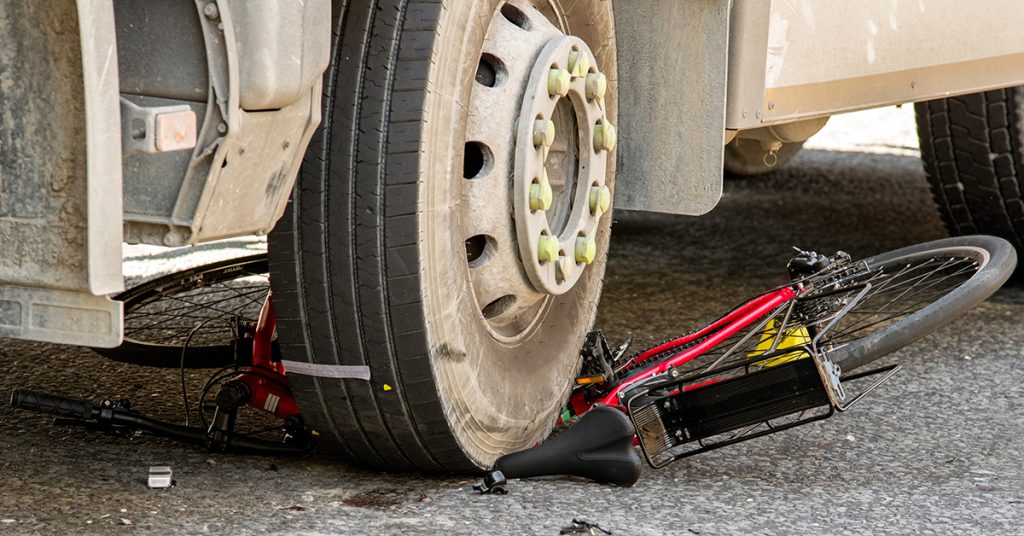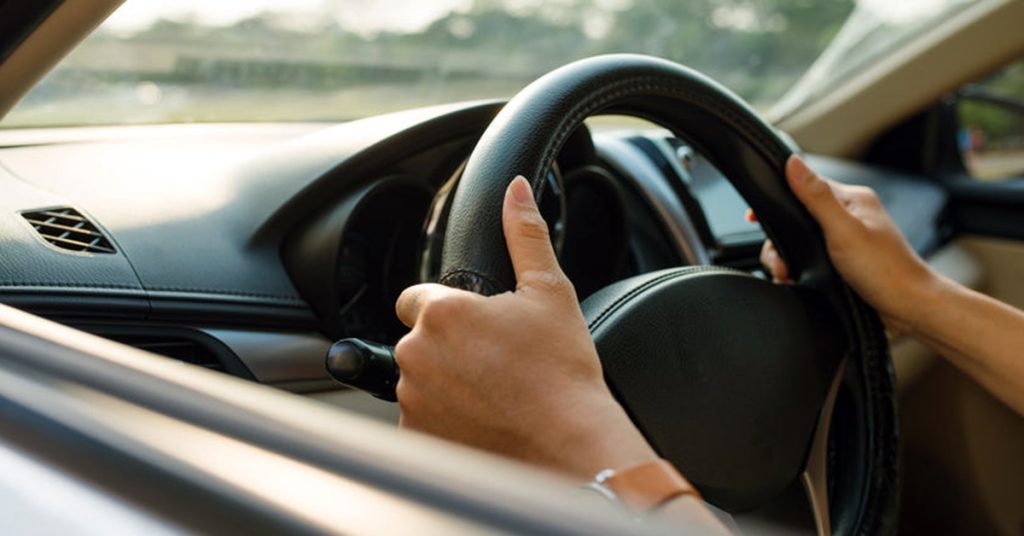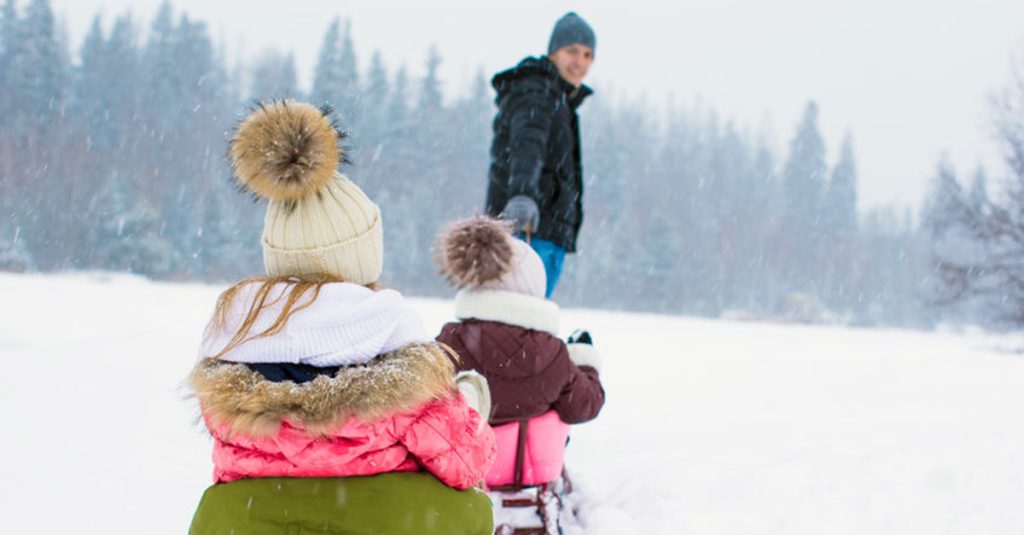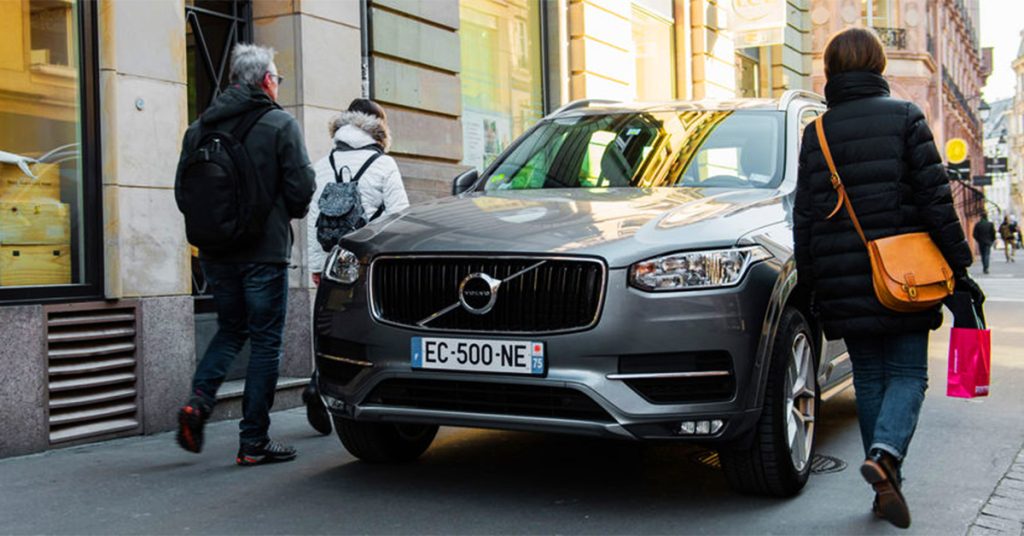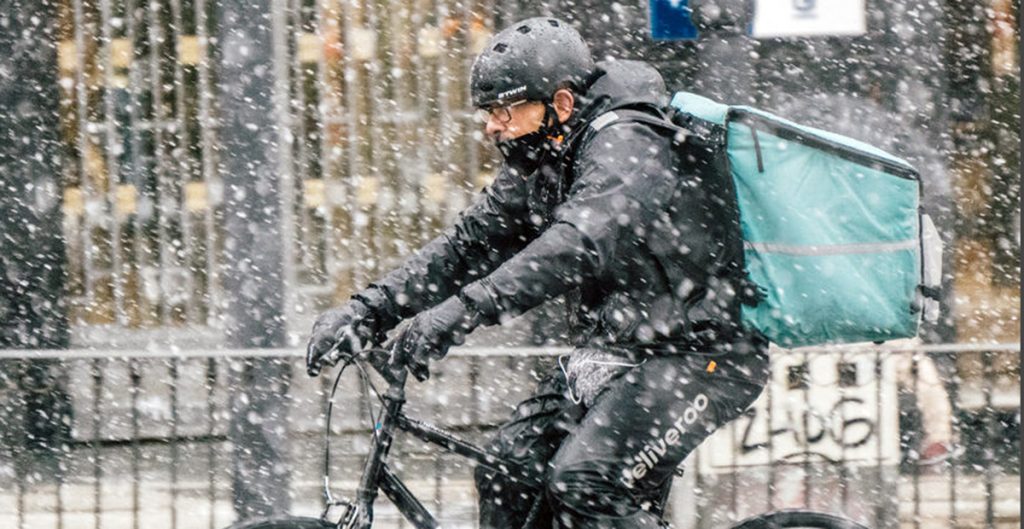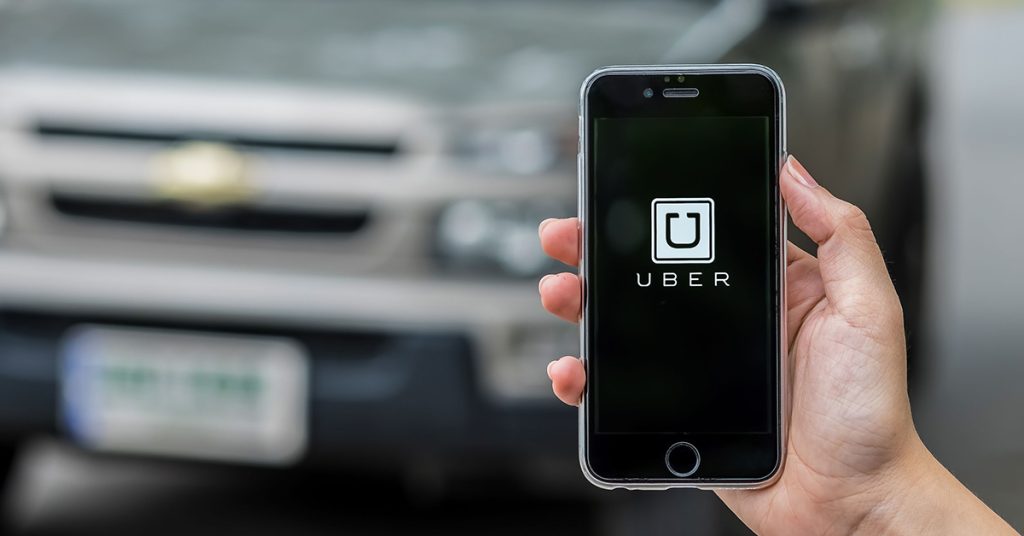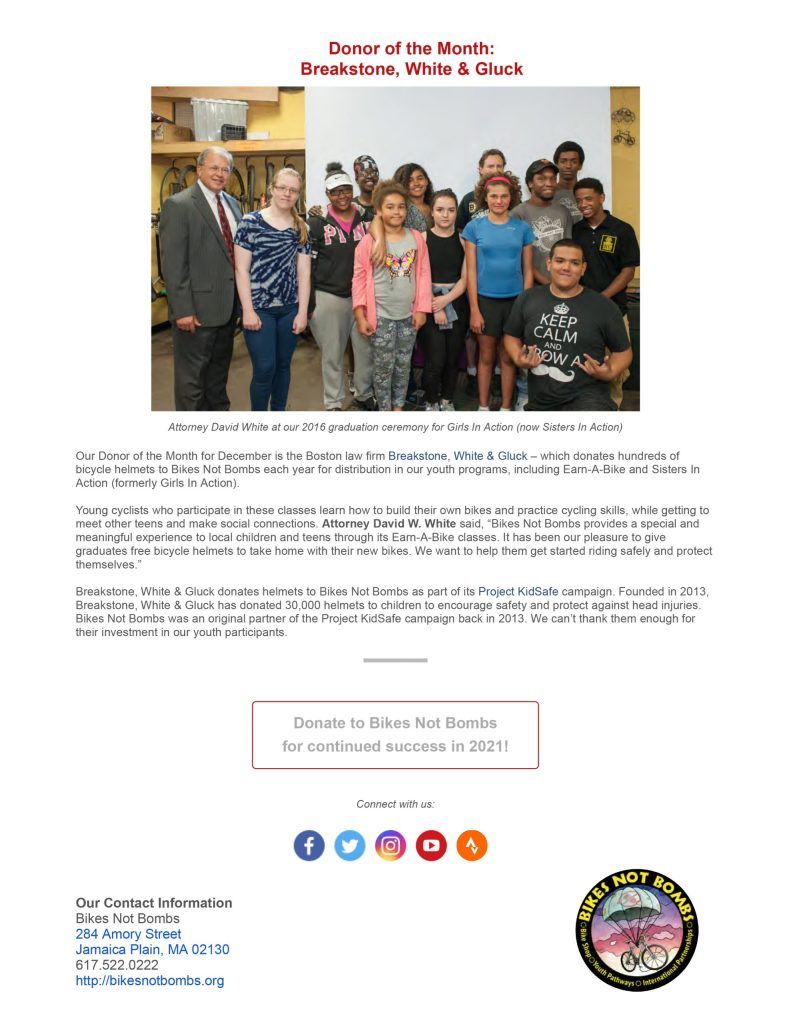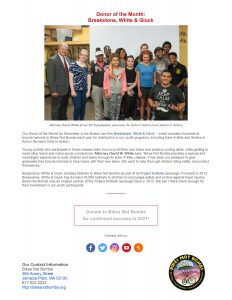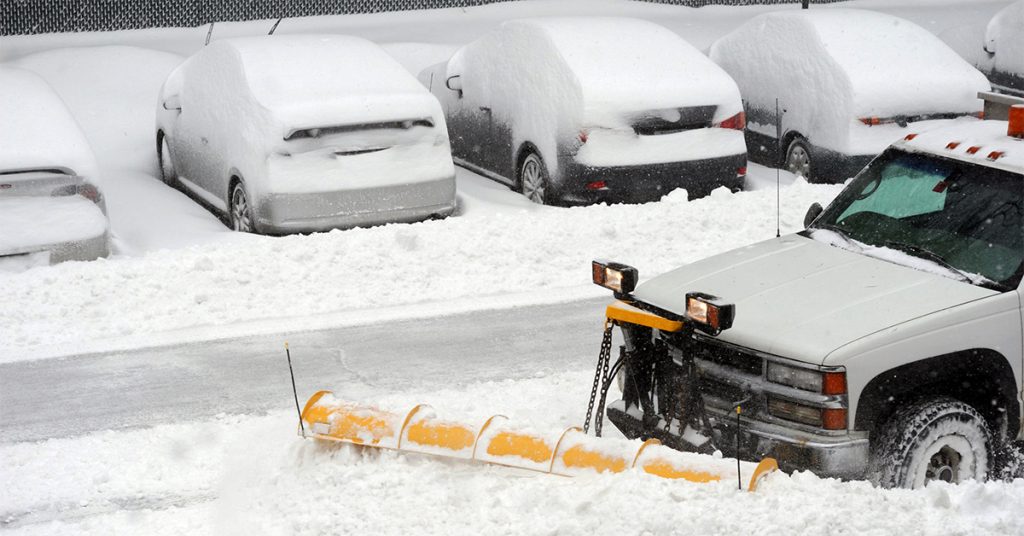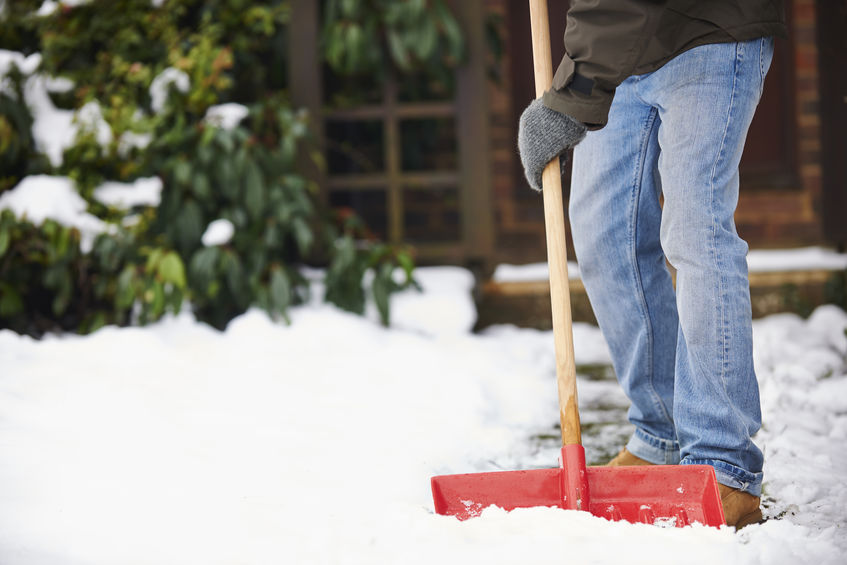Legislation Proposed to Require Sideguards on Massachusetts State-Contracted Trucks
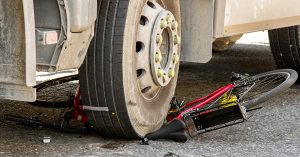 Massachusetts lawmakers have been asked to approve legislation to protect cyclists from serious and fatal injuries caused by large truck crashes.
Massachusetts lawmakers have been asked to approve legislation to protect cyclists from serious and fatal injuries caused by large truck crashes.
“An Act to Reduce Traffic Fatalities,” would in part require state-contracted trucks to be outfitted with safety sideguards, crossover mirrors, convex mirrors and blind-spot decals to reduce the risk of cyclists being swept underneath the tall carriage of large vehicles. These sideswipe truck accidents are often fatal for cyclists and pedestrians. Meanwhile, the convex mirrors would help expand a truck driver’s view of cyclists. The version of the bill proposed in the House of Representatives would also require use of backup cameras.
The bill numbers are HD.1888 and SD.1613. More on the bill and others proposed this session can be found on the MassBike website.
For Safety, Cities in Massachusetts and Other States Have Already Started Mandating Sideguards
This is not the first time truck sideguards have been proposed in the Massachusetts Legislature or local communities. In 2014, the City of Boston passed the first sideguard ordinance in the nation, requiring sideguards, crossover mirrors, convex mirrors and blind-spot awareness decals on city-contracted trucks. Somerville and Cambridge have also pursued their own bylaws and ordinances to protect cyclists, pedestrians and others against injury. The City of Cambridge initially approved an ordinance for city-owned trucks, then discussed extending the requirement to city-contracted trucks in 2019, after two fatal bike crashes the previous year, according to Wicked Local Cambridge. One of the cyclists was hit by a subcontractor working on a city paving project at the intersection of Monsignor O’Brien Highway and Museum Way. We do not have an update on whether the city changed its ordinance.
Beyond Massachusetts, Washington D.C. and Portland, Oregon have passed truck sideguard ordinances. Portland has had an ordinance in place since 2019, following the death of at least 22 people in heavy-weight truck accidents in the previous four years, according to the city website.
On average, 26 pedestrians and 22 cyclists are killed in truck collisions with the left and right side of large commercial trucks in the U.S. This is according to a May 2020 report on truck sideguards published by the U.S. Department of Transportation Federal Motor Carrier Association (U.S. DOT).
But the dangers of large trucks are much greater when you factor in cyclists who survive serious truck crash injuries.
Sideguards are just one step toward protecting cyclists. They may prevent a cyclist from being swept under a commercial truck, tractor trailer or trash truck. But sideguards cannot protect against all bicycle accidents. It is essential that drivers also operate with reasonable care, check for cyclists and use their mirrors. At intersections, commercial truck drivers have a responsibility to check left, right, front and back for cyclists. We can’t stress the importance of this.
While this may sound like an easy task, it is actually a unique sequence. Think about it. Drivers generally check front and back for other drivers who are traveling in the same lane and in nearby areas. By contrast, cyclists are usually traveling in the same direction, on the right side of the road or incoming from other parts of the intersection. They are often approaching trucks from behind, then meet parallel at an intersection or stop.
Cyclists are also allowed to travel in the center lane when they need to do so for safety, a common move at intersections. This is because of the chance a truck may overtake a cyclist making a right turn in the bike lane or on the side of the road. When this happens, cyclists can become trapped underneath in the absence of sideguards. Even with sideguards, a truck can collide with the cyclist from the side, causing a forceful and fatal collision sending a cyclist into sidewalks and curbs, vehicles parked on the side of the road or in the middle of the intersection. This is known as a right-hand hook crash.
In addition to sideguards and convex mirrors, backup cameras have become the leading safety tool for all drivers in recent years. The right one can also contribute to safer encounters with cyclists.
Free Legal Consultation – Boston Personal Injury Lawyers Experienced in Representing Cyclists Injured by Large Vehicles and Trucks
The bicycle accident attorneys at Breakstone, White & Gluck have extensive experience pursuing financial compensation for cyclists injured in bicycle accidents involving large trucks and vehicles. If you have been injured, the cause may have been a driver’s negligence or a truck’s defective mechanical system. It is vital that you or a family member report the bicycle accident right away to police and consult with an experienced attorney.
Breakstone, White & Gluck has represented clients injured by negligence in Massachusetts since 1992, including in Boston, Cambridge and Somerville; Plymouth and Brockton; the South Shore, Cape Cod, Framingham, Worcester, and Lawrence, Danvers and Newburyport and Gloucester on the North Shore.
For a free legal consultation, contact Breakstone, White & Gluck at 800-379-1244 (toll-free) or 617-723-7676. For your convenience, you can also use our contact form.
Watch for Savings, But Keep Paying Your Massachusetts Auto Insurance Premiums During the Pandemic
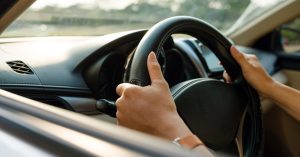 It has been nearly a year since Massachusetts called the COVID-19 state of emergency. Your daily routine has completely changed and you are not driving very often. Do you still need to buy auto insurance at this point?
It has been nearly a year since Massachusetts called the COVID-19 state of emergency. Your daily routine has completely changed and you are not driving very often. Do you still need to buy auto insurance at this point?
Yes. Under state law, you are required to purchase a Massachusetts auto insurance policy if you have a driver’s license and register a vehicle. If you cause a car accident in Massachusetts, you are responsible for compensating anyone you have injured for their medical expenses and other financial losses. You also have to pay for property damage.
Auto insurers granted Massachusetts drivers some discounts last year, but lawmakers and consumer advocates are starting to raise the question of further discounts.
Calls for Action on Reducing Auto Insurance Premiums in Massachusetts
On Feb. 12th, the Lawrence-Eagle Tribune reported state Sen. Barry Finegold, D-Andover, and other legislators have asked the state Division of Insurance to review insurance rates, premiums and losses. They also want insurers to offer refunds from profits.
Attorney General Maura Healey’s office also recently asked regulators to reduce personal automobile insurance premiums by at least 25 percent, according to the newspaper. Her office cited data showing the frequency of liability coverage claims fell more than 50 percent between 2019 and 2020. There was a 70 percent drop in the frequency of collision coverage claims.
Our Massachusetts Auto Insurance Tips During COVID-19
Purchase the Minimum Auto Insurance
Under Massachusetts law, you have to purchase the required minimum coverage limits. There has been no change to the coverage limits during COVID-19.
- Bodily Injury to Others, $20,000 per person; $40,000 per accident
- Personal Injury Protection (PIP), $8,000 per person, per accident
- Bodily Injury Caused by an Uninsured Auto, $20,000 per person; $40,000 per accident
- Damage to Someone Else’s Property, $5,000 per accident
These are low coverage limits. In most cases, drivers should purchase more to adequately protect themselves and others if they cause a car accident. The key with auto insurance is you must purchase the right amounts and coverage types to protect yourself. Learn more about the different coverages in our article, “Understanding and Buying Massachusetts Car Accident Insurance.”
How Auto Insurance Protects You
Right now, you may be asking why you need to buy an auto insurance policy at all. This is a good time to remind you of all the ways your policy can work for you. Most drivers can appreciate that they are required to purchase auto insurance under Massachusetts law. At the very least, under M.G.L. c. 90, § 34J, you may face a fine between $500 to $5,000 if you are caught operating without insurance. Most drivers can also appreciate that auto insurance can protect them financially if they make a mistake and cause someone injury in a car crash.
But there are other protections. First, you may need your auto insurance to protect yourself. Even if another driver was at fault in a car crash, you may have to file a claim with your own policy for your medical expenses and lost wages. This would be true if you were injured by an uninsured or underinsured driver. This would also be the case if you were injured in a hit-and-run accident and could not identify the driver.
If you are a cyclist, you may be entitled to pursue a claim against another driver for your injuries in a bicycle accident. However, having your own auto insurance policy can provide necessary resources to help you recover, especially if the driver does not have auto insurance.
Another benefit is auto insurance can protect our loved ones or those living in our household. Call your insurance agent and ask to add these licensed drivers to your policy. They may be able to draw on the coverage should they ever be injured in a car crash or a bicycle accident and not have coverage elsewhere.
Keep Massachusetts Auto Insurance Payments Current
It is fine to evaluate your auto insurance. But do not withhold or miss an auto insurance premium payment or you could risk your insurer cancelling your policy. If you are facing financial hardship, one option is you can set up a payment plan over the year. In doing so, you may be losing a pre-payment discount, but it may be the best approach for your situation right now.
Before you call your insurer or insurance agent, learn as much as you can. Read the state advisory on Motor Vehicle Insurance Installment Payment Plans.
Seek Quotes from Massachusetts Insurance Agents
In Massachusetts, you can purchase insurance directly through an insurer or an insurance agent. Call and ask if you qualify for any discounts based on your current driving routine, vehicle, employer or group memberships. At a minimum, insurers should offer a discount for traveling more than 5,000 miles in a year.
It is usually worth requesting quotes from more than one insurance agent or companies. In Massachusetts, some insurance agents can offer quotes from multiple companies. Expect most to represent just a single company. Here is the state of Massachusetts insurance agent database.
Check for Discounts and Savings
The best types of discounts and savings are those you achieve just by checking in with your auto insurance agent. For instance, you may be eligible for a discount because you logged fewer than 5,000 miles on your car in 2020.
In some cases, this conversation may not result in savings. You may need to add someone to your household policy or purchase business coverage because you started using your vehicle for work. Whatever your situation, you have a responsibility to keep your auto insurer updated so you have proper coverage should you need it. Many people put their auto insurance coverage at risk without even realizing it when they move and start garaging their vehicle in a new location. Your auto insurance is calculated in part based on where you garage your vehicle. College students who take their vehicles to campus also need to update auto insurers.
Where to Learn More About Massachusetts Auto Insurance
We mentioned a few of our auto insurance articles in this blog. We also invite you to read our other auto insurance articles, including “What Every Massachusetts Bicyclist Needs to Know About Car Insurance” and “Massachusetts Motorcyclists: Buy the Right Types of Auto Insurance to Protect Yourself and Your Finances.”
Free Legal Consultation – Boston Car Accident Attorney
At Breakstone, White & Gluck, our Boston car accident lawyers are known for our commitment to pursuing the best financial result for clients. If you have been injured by someone else’s negligent driving, you may be entitled to seek compensation for your injuries. We represent clients throughout Massachusetts, including in Boston, Quincy, Cambridge, Somerville, Everett, Brookline and Arlington.
For a free legal consultation, contact our attorneys at 800-379-1244 or 617-723-7676 or use our contact form.
Tips for Sledding Safely in Massachusetts
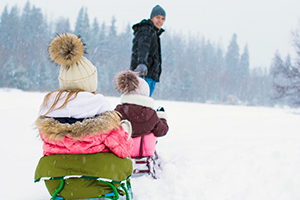 February has delivered perfect sledding weather for Massachusetts families. But before you head out with your children, remember the risk for injuries can rise during outdoor winter activities. Sledding, skating and skiing push our bodies beyond our daily routines as we face the elements of cold weather, snow and ice.
February has delivered perfect sledding weather for Massachusetts families. But before you head out with your children, remember the risk for injuries can rise during outdoor winter activities. Sledding, skating and skiing push our bodies beyond our daily routines as we face the elements of cold weather, snow and ice.
More than 20,000 children are treated for sledding injuries on average each year, according to the National Safety Council. Children can be injured when a sled hits a stationary object, in collisions with other sledders or by flipping or falling off their sled. Sledding accidents such as these can result in broken bones, lacerations, bruises, concussions, head injuries or more serious injuries.
You can protect your children by sledding with them and teaching them safety fundamentals by example. Please read our tips and enjoy a fun and safe sledding experience:
Choose a Safe Sledding Spot
After asking friends for suggestions and searching online, visit a few local sledding hills on your own, without your children. Walk to the top of the sledding area. Check your cell phone service from that point. Sledding hills may look similar, but they are not all equal. Choose a sledding area that is free from trees or rocks that could cause your child injury. Avoid hills that are too close to streets and parking lots.
Look for sledding hills that are snow-covered, not ice-covered.
A walkthrough is particularly useful for parents of young children, who are most vulnerable to the cold. Time your walk and compare this to your child’s regular play time in the snow and their physical capabilities. Think about whether your child can the hill – both the steepness for sledding and walking up the hill.
Sled During The Day. There is less visibility and colder temperatures at night. Your best approach is to sled during the day, when the sun is out.
Sled With Your Children and Supervise.
Sled as a Family. Plan at least one sledding day for your family each year. Besides being a lot of fun, this will create special memories. Sledding is also great way to get some fresh air and exercise for children, which we all need during the winter months.
Sled with Your Child and Their Friends. If your child or teenager wants to sled with friends, go along and watch. Enjoy this time but consider it a parenting assignment. You should really watch them just as you would if they were swimming, with your full attention. Keep your cell phone and a first aid kit within reach.
Sledding Manners. Teach your children to use good manners on the sledding hill. Even if there are no formal rules posted, your children should walk up the hill along the side of the sledding area. When sledding, they should not overcrowd sledders or attempt to run into them on the course. Once they reach the bottom of the hill, children should step off their sled.
—
Dress Warmly
When children are having fun, they may not realize how cold they are or be able to tell you.
Before you sled, make sure your child is wearing a warm winter coat, snow pants, hats, gloves or mittens. Purchase waterproof clothing. Your child should be warm and clothes should fit comfortably.
Take scarves off children before sledding. Also remove strings from clothing and accessories which can cause strangulation or get caught while your child sledding.
—
Safe Sleds and Helmets
Wear a Helmet. Encourage children to be aware of their surroundings and stay in control of their sleds as a good starting point to safety. Parents should also buy young children helmets to protect against head injuries. The Consumer Product Safety Commission advises parents can purchase helmets which meet the ASTM F14922 or Snell N-942 safety standard. If you have questions, we suggest you check the CPSC website which offers guidance on helmet designs for different activities. Another resource is your pediatrician. Ask for their specific suggestion for protecting your child.
Check Your Sleds. If you see sharp edges or cracks, replace your child’s sled.
Purchase a Safe Sled. There are many types of sleds: snow tubes, saucers or toboggans. Read age recommendations and product safety labels. Look for sleds which can be steered or have handles. Specifically look for ropes. While many sleds come with ropes, you can purchase sleds without any to protect young children against strangulation or getting caught on something.
Before you purchase a sled, make sure to check the Consumer Product Safety Commission website for safety recalls. Sleds can be designed with defects, such as faulty brakes on higher end models.
No Make-Shift Sleds. Do not allow your child to make their own sled out of furniture, cardboard or household objects. These products are not designed to carry your children on the snow.
—
Safe Sledding Techniques
Sledding Techniques. Pull your sled up next to theirs and show your children how to ride their sleds safely. Children should generally sit, hold the handles and ride face-forward down the hill. They should not ride stomach down or face first because they could flip or fall off. This can cause serious head or spinal cord injuries.
Riding Alone or Together? It’s a lot of fun to sled with your children or watch them ride together. The key is to find the right sled for the right number of sledders. And of course, the right hill!
Adults can pull young children. But for the most part, children should sled alone as they get older. It is important for them to steer their own sleds and hold on for themselves.
If you want to purchase a sled or tube that carries more than one child or adult, that’s a special experience. Read the manufacturer’s age recommendations, safety warnings and instructions. Look for a few online videos.
Free Legal Consultation – Boston Personal Injury Lawyers
Breakstone, White & Gluck is pleased to share our sledding tips as part of our Project KidSafe campaign. Through Project KidSafe, our goal is to help families protect against child injuries.
Breakstone, White & Gluck is a top-rated Boston personal injury law firm, with more than 100 years combined experience. We represent clients in personal injury cases in Boston and across Massachusetts. If you have been injured by someone else’s negligence, contact us for a free legal consultation at 800-379-1244 or 617-723-7676 or use our contact form.
For Pedestrians, SUVs are Deadlier than Cars
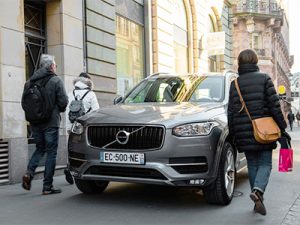
A new IIHS study found SUVs crashes caused more severe injuries to pedestrians than cars.
During the pandemic, pedestrians have outnumbered vehicles on the roads at times. If you look closely, you may see mostly large vehicles left behind, including commercial trucks, package delivery vans and SUVs.
Today, our Boston personal injury lawyers are writing about SUVs and pedestrians. Amid the pandemic, an important study was published by the Insurance Institute for Highway Safety (IIHS), finding SUVs (or sports utility vehicles) cause more serious pedestrian injuries than cars. Researchers concluded automakers need to make design changes to protect pedestrians from increased fatalities.
Highlights from the 2020 study and report:
Drop in overall crashes. Overall, motor vehicle accident fatalities have dropped from more than 50,000 in 1980 to 36,560 in 2018.
Rise in pedestrian crashes. Meanwhile, one in five traffic crashes is now a pedestrian fatality. Pedestrians are more at risk now. The number of pedestrians hit by all vehicles rose a dramatic 53 percent from 2009 to 2018.
Study data. The study reviewed a sample of 79 crashes in Michigan, finding that SUVs caused more serious injuries to pedestrians than cars.
Speed. Below 20 mph, there was not a significant difference in the injuries caused by SUVs and cars.
More danger at higher speeds. When SUVs traveled 20 to 39 mph, 3 out of 10 SUV crashes ended in a pedestrian death. In comparison, 5 out of 22 cars caused a pedestrian fatality.
Over 40 mph was most deadly. At 40 mph, all three SUV crashes resulted in pedestrian fatalities. This is 100 percent compared to 54 percent of cars (7 out of 13).
Previous Research
The IIHS has led several studies on SUVs and the dangers to pedestrians. One past study found that as pedestrian accidents overall have increased, many involve cars, but there was an 81 percent increase in SUVs causing fatal pedestrian accidents between 2009 and 2016.
There are more SUVs on the roads than ever, making it important to address the safety hazards to pedestrians. SUVs first outsold sedans in 2015, according to The New York Times. They continue to be the vehicle of choice for many Americans. In fact, SUVs accounted for up to 47.4 percent of all U.S. auto sales, according to an analyst quoted by the newspaper.
SUV Designs Are Now Being Made Safer for Drivers
What is notable about SUVs is manufacturers have already spent years adopting more “carlike designs” to protect SUV vehicle occupants. Manufacturers have lowered SUV bumpers and other features to align better with cars. The danger to pedestrians has not been addressed the same way.
According to the IIHS, SUVs can endanger pedestrians because of the overall shape of their front end. On many SUVs, the front end is solid and can have a double impact, striking the pedestrian at the pelvis or chest, just after the bumper hits the person’s lower body.
The IIHS now plans to look into the types of SUVs which caused injury in the Michigan study. Meanwhile, in Europe, manufacturers have already started to make use of safety features, such as pedestrian airbags.
A Note for SUV Drivers
Many of us own SUVs. If you purchase one in the future, be aware of the ongoing safety research and read about the specific features on the model you wish to purchase. You may have bought one 10 years ago and find this year’s model is not right for your family and where you live and work.
We suggest you check in with the IIHS website. Other organizations such as Consumer Reports may also offer safety insights.
Consider Your Driving Routine. You want to back your SUV into your driveway as much as possible. This way you have a full view of traffic, cyclists and pedestrians when you leave. To do this safely, you will need a good backup camera. You may also need to make other enhancements to your property as well.
Your ability to back up safely is critical. Many SUV crashes happen as drivers back up and hit a pedestrian or a child playing.
Review Features. Read consumer ratings and reviews on the SUV you want to buy. Vehicles made after 2018 are required to come with backup cameras. Do not assume all backup cameras are equal. Read up on consumer ratings and reviews and test drive your SUV before finalizing the purchase.
Buying Used SUVs. Make sure to properly equip older SUVs with backup cameras and other safety gear.
Free Legal Consultation – Boston Pedestrian Accident Attorneys
At Breakstone, White & Gluck, our pedestrian accident lawyers offer a free legal consultation to determine whether you have a potential claim for your injury. Recognized by Top 100 New England Super Lawyers, we provide our clients with the highest quality representation and specialize in the areas of car accidents and pedestrian accidents, including SUV crashes resulting in serious injury.
If you have been injured, learn your legal rights. For a free legal consultation, contact our attorneys at 800-379-1244 or 617-723-7676 or use our contact form.
Driving Safely Near Cyclists During Boston’s Winter Pandemic
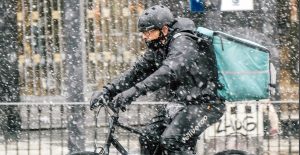
In Boston, drivers can take extra caution when traveling near a cyclist during winter.
Gone are the days when drivers only had to watch for cyclists during the warm weather in Massachusetts. Cyclists have become a fixture on our roads year-round in Boston, including in January and as the pandemic continues.
As a driver, we urge you to slow down this winter and look for cyclists. Also give cyclists extra room so they can respond to a traffic situation without wiping out or being struck in a bicycle accident.
While most cyclists try to avoid stormy weather, there are times when cyclists still find themselves riding in slippery or snowy situations. Also remember that days after a snow fall, snow plows can make another pass at roads and parking lots, which can interfere with a cyclist’s path as well as pedestrians, cars and delivery trucks.
If you fail to check for cyclists, you could cause a cyclist a life-threatening injury and be held financial liable by the victim. Do all you can to avoid causing a cycling accident. Take a few minutes to ask a cyclist about the challenges they face on the road, continuously check for cyclists while you drive and always assume there will be cyclists on the road.
This blog shares safety reminders to help Massachusetts drivers travel safely near cyclists this winter.
Massachusetts Bicycle Laws. In Massachusetts, cyclists have rights and responsibilities. One of the first rights concerns where cyclists can ride. Under M.G.L. c. 85, § 11B, cyclists are allowed to ride in a bike lane, on the side of the road or in the main traffic lane. Up to two cyclists can ride abreast in the main traffic lane. Cyclists should travel in the same direction as traffic.
When you see a cyclist, remember they can switch lanes or turn at any time. They may not always be able to safely use hand signals. Likewise, if you find yourself behind a bicycle and they are blocking traffic, you should practice patience or take another route.
Common Bicycle Injuries. Cyclists are vulnerable on the roads, traveling between motorized cars, trucks and other vehicles. A cyclist can be injured when a driver makes an error at an intersection or cuts the cyclist off when turning.
When a truck turns at an intersection, the driver has a responsibility to check for a cyclist before turning right. Truck drivers who neglect this step can cause a fatal crash injuring a cyclist. This is often called a “right hook” crash.
Another type of bicycle crash is called a “left hook” accident. This type of collision happens when a vehicle travels straight or turns left at an intersection, cutting off or colliding with a cyclist at an intersection. The cyclist is usually traveling in another direction.
By simply remembering to check for cyclists at intersections, truck drivers and motorists can make a big difference in preventing an accident or fatality. As you wait for a red light, try to look several times for cyclists: front, right, left and back. Many drivers neglect to fully check their blindspots, which is where cyclists are likely to be.
Darkness and Storms. The majority of fatal bike crashes in 2018 occurred between 6 p.m. and 9 p.m., according to the National Highway Traffic Safety Administration (NHTSA). Darkness falls earlier during the winter and there are also snow and rain conditions. Be patient if you see a cyclist pedaling in snow conditions.
As a driver, another step you can take is to look for well-lit roads. You can also look for the light. As a driver, if you see a flicker of color ahead, this is likely a cyclist or pedestrian.
Under Massachusetts law, cyclists are required to use bike lights when riding from thirty minutes after sunset until thirty minutes before. Bike reflectors are also required. Cyclists must have reflectors wrapped around both pedals or around their ankles. The bike lights should be visible from distances of 500 to 600 feet.
See the Cyclist From A Distance. In addition to checking for cyclists at intersections, always look ahead for cyclists. Scan the side of the roads. Cyclists should be traveling on the same side of the road as you in the same direction, but they may not always do so, especially if they are displaced by snow conditions. By taking time to look ahead, you give yourself more time to respond.
Read more tips on cycling safety in our article, “Facts About Massachusetts Bicycle Laws.”
About Breakstone, White & Gluck – Free Legal Consultation
Breakstone, White & Gluck has extensive experience representing cyclists who have been injured in bicycle accidents by negligent drivers in Boston, Cambridge and across Massachusetts. Our attorneys are skilled at investigation and negotiation with insurance companies to help our clients obtain the compensation they need for their recovery.
If you have been injured, learn your legal rights. Call Breakstone, White & Gluck at 800-379-1244 or 617-723-7676 for a free legal consultation. You can also use our online contact form.
Report: Fatal Pedestrian Accidents Rose Over Decade in Massachusetts
The New Year has begun with several reports of pedestrian accidents across Massachusetts. One pedestrian was seriously injured in Springfield. Two pedestrians were killed, one in Charlestown and one in Oxford.
On January 5th, Boston Police responded to a fatal scene at Charlestown’s City Square. A 92-year-old pedestrian died after being struck by a vehicle near the Charlestown Navy Yard and dragged for nearly a mile, according to news reports. Police later announced they had located a vehicle of interest.
A new report highlights the dangerous climb in pedestrian crashes in the U.S. Between 2009 and 2018, the number of pedestrians killed in U.S. car crashes rose by 55 percent, according to the AAA Foundation for Traffic Safety. This is a major increase, following three decades of decreases.
In Massachusetts, 725 pedestrians were killed during this period. Another 17,000 pedestrians were injured. Boston, Springfield, Worcester, New Bedford and Brockton reported the highest numbers of pedestrian injuries and fatalities in Massachusetts.
Other notes:
- Most pedestrian injuries occurred between 3 p.m. and 7 p.m.
- 28 percent of the pedestrian accident victims in Massachusetts were 65 or older
- 3 out of 4 pedestrians killed on U.S. roads in 2018 were hit during darkness
- 84 percent of pedestrian accidents over the 10 years occurred on streets with speed limits 30 mph or higher
- There was a 70 percent increase in pedestrians killed at non-intersection locations without crosswalks
AAA is calling on cities and states to improve traffic infrastructure to provide more protection to pedestrians.
This report is a good reminder for drivers to really watch for pedestrians. This is January and darkness comes early. We are also wrestling with the COVID-19 pandemic. Many Massachusetts residents are out of routine and may be walking in new areas and at different times. As a driver, you have the ability to slow down and that can make all the difference in preventing a pedestrian accident. According to StreetsBlog, a pedestrian struck by a driver traveling at 20 mph has a 93 percent chance of surviving.
Here are a few safety reminders for drivers:
- Obey traffic signs.
- Slow down. Travel below the speed limit.
- Stop for pedestrians at crosswalks.
- At traffic signals and stop signs, look front, back, right and left before you step on the gas. You have to watch for pedestrians as well as cyclists.
- Do not use your cell phone while driving.
Free Legal Consultation – Breakstone, White & Gluck
At Breakstone, White & Gluck, our Boston personal injury lawyers are known for our experience representing pedestrians who have been injured in motor vehicle accidents, truck collisions and bus accidents. We represent those injured by the negligence of others across Massachusetts, including in Boston, Cambridge, Somerville, Everett, Quincy and other areas. If you or a loved one has been injured, learn your legal rights.
For a free legal consultation, contact Breakstone, White & Gluck at 800-379-1244 or 617-723-7676 or use our contact form.
Massachusetts Supreme Judicial Court Rules Uber’s App Failed to Provide Consumers Reasonable Notice of Terms and Conditions

The Massachusetts Supreme Judicial Court has ruled Uber did not provide users with reasonable notice of its terms and conditions.
Have you ever signed up for a rideshare app and been frustrated to see the extensive terms and conditions – all on your small cell phone screen? Just what are you agreeing to?
You are not alone. Now, the Supreme Judicial Court of Massachusetts has found Uber failed to provide reasonable notice of its terms and conditions to users. A Massachusetts man and a family member filed a discrimination lawsuit against Uber in 2016, then were compelled into arbitration with the rideshare company based on the app’s terms and conditions.
But on Monday, the Supreme Judicial Court ruled there was no enforceable arbitration agreement between Uber and the plaintiffs in Christopher P. Kauders & another vs. Uber Technologies, Inc. The Supreme Judicial Court remanded the case back to Superior Court.
The Court reviewed Uber’s complicated registration process, noting app users could easily bypass the initial screens, but the process grew much more cumbersome as the consumer approached the terms and conditions and privacy policy.
The Court wrote certain terms and conditions were extensive and far reaching and, “may literally require an individual user to sign his or her life away, as Uber may not be liable if something happened to the user during one of the rides.”
The Facts
In 2016, the plaintiffs filed a civil lawsuit against Uber in Suffolk Superior Court, claiming that Uber had discriminated against them in violation of M.G. L. c. 272, § 98A. This statute prohibits discrimination against anyone who is blind, deaf or has another physical handicap and is accompanied by a guide dog in Massachusetts. One of the plaintiffs was blind and claimed three Uber drivers had refused him service in 2015 and 2016.
Citing a provision in its terms and conditions, Uber moved for arbitration against the plaintiffs’ opposition. On June 4, 2018, the arbitrator issued a ruling finding that Uber was not liable for the discriminatory acts of the drivers, who are independent contractors.
Then, on June 25, 2018, a decision came in the case of Cullinane vs. Uber Techs, Inc. The United States Court of Appeals for the First Circuit ruled that Uber’s registration process did not create a contract because app users did not have reasonable notice of the terms and conditions.
Users Not Given Reasonable Notice of Terms and Conditions
In Kauders, the Massachusetts Supreme Judicial Court wrote that Uber writes terms which are extremely favorable to the company and does not give users “reasonable notice” of the terms and conditions.
The Court concluded, “Uber’s terms and conditions did not constitute a contract with the plaintiffs. The app’s registration process did not provide users with reasonable notice of the terms and conditions and did not obtain a clear manifestation of assent to the terms, both of which could have been easily achieved.”
Another problem, the Court wrote, is Uber can amend the terms and conditions whenever it wants without consent from users. The burden is on the consumer to keep checking and there is no way for the consumer to object.
In response to the decision, an Uber spokeswoman told The Boston Globe the company had already modified its application forms in a way that should comply with the Court’s reasoning.
What if You Are Injured in a Rideshare Accident?
Rideshare companies have worked to limit their liability in many areas. However, those injured in rideshare car accidents in Massachusetts still have the right to pursue financial compensation for their injuries. In 2016, Massachusetts passed legislation to regulate Uber, Lyft, and other transportation network companies. Under the legislation, drivers must carry an adequate level of auto insurance while working for a rideshare company.
Rideshare accidents can happen and injure passengers, but also drivers of other vehicles and their passengers, as well as pedestrians and cyclists. If you have been injured, it is important to document whether a driver was operating a rideshare vehicle for work or personal use at the time of the crash.
This may be important because rideshare drivers are required to have additional coverage when logged onto the transportation company’s digital network or while the driver is engaged in a pre-arranged ride in Massachusetts.
In the News
Watch Attorney David W. White speak to NBC Boston about complicated rideshare app agreements in 2019:
Boston Car Accident Lawyers – Breakstone, White & Gluck
Breakstone, White & Gluck specializes in the handling of personal injury cases in Massachusetts and has been consistently recognized for our results, including as Top 100 New England Super Lawyers and Top 100 Massachusetts Super Lawyers.
If you have been injured in a car accident or a rideshare accident, learn your legal rights. It is in your best interest to consult a Boston car accident attorney before signing any documentation or speaking to the driver’s insurance company.
For a free legal consultation, contact Breakstone, White & Gluck at 800-379-1244 or 617-723-7676 or use our contact form.
Breakstone, White & Gluck Featured in Bikes Not Bombs Newsletter
Breakstone, White & Gluck was pleased to be mentioned as a long-time supporter of Bikes Not Bombs in the organization’s December newsletter. Each year, Breakstone, White & Gluck donates bicycle helmets to support Bikes Not Bombs as part of our Project KidSafe campaign. This is one of our all-time favorite donations because Bikes Not Bombs gives the helmets we donate to children and teens who graduate from its Earn-A-Bike programs. If you are familiar with these classes, you know students work very hard learning how to build their own bike and are taught valuable cycling skills from experienced riders. It is our pleasure to send the students home with a new helmet to help them ride their new bikes safely.
We are already looking forward to making another donation in 2021!
Driving Safely in Massachusetts Snow Conditions
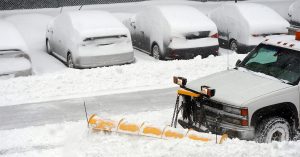
Drivers have a responsibility to use reasonable care and caution during snow conditions. In Massachusetts, numerous car accidents were reported across the state during last weekend’s Nor’easter. In Lowell, a woman in a wheelchair was killed by a snowplow crash.
When the snow starts to fall, get ready for winter travel conditions. While many Massachusetts residents are working remotely, most of us are still driving in some capacity and it is critical to prepare. You want to travel safely, slowly and defensively so no one is injured.
If you fail to exercise reasonable care during snow and ice conditions, you are more likely to slip, slide or crash on the road. You could cause yourself injury and need a new vehicle. But even more critical, you could cause someone else serious injury in a car accident. You could be held financially liable and have to pay a claim through your Massachusetts automobile insurance policy.
Stock your car up with emergency supplies. Include jumper cables, a snow shovel and scraper, a flashlight, extra windshield wiper fluid, antifreeze and a basic tool kit, with a screwdriver and other essentials. Also pack a warm blanket, bottled water and a snack, as well as a bright colored flag to wave should you need help. Another tip from the state of Massachusetts: have sand, road salt, a strip of carpet or kitty litter for traction should you need it.
Check your vehicle’s systems. Keep up with routine maintenance during the pandemic, even if you are not driving as often. On your own, you can inspect your tires, headlights and taillights to make sure they are working. You can also check your wiper blades and windshield washer fluid, heat and defrost.
Check weather alerts and traffic updates. Check both weather and traffic conditions before leaving home. Check weather conditions hour-by-hour so you are prepared.
Stay home. Avoid traveling during heavy snow conditions. If you must travel, use public transportation or delay your commute if possible.
Most New England residents do not re-arrange their travel plans for rain. Schools have “snow days” but not “rain days.” But be aware that any type of precipitation impacts visibility and safety on the road. One recent study looked at more than 125,000 fatal motor vehicle crashes between 2006 and 2011 and put a number on the risk for car accidents.
According to the study, published by the Bulletin of the American Meteorological Society, the risk rises based on the intensity of the precipitation. Light precipitation may increase the potential hazard by 27 percent. The risk more than doubles during heavier precipitation.
One of the researchers told the Washington Post that many drivers do not appreciate how the risk for crashes increases during even light rain.
Clear snow off your car. Plan an extra few minutes to remove snow from your vehicle’s roof, windshield and windows. You should be able to see in all directions from the driver’s seat.
In Massachusetts, police can cite drivers who neglect to clear snow because this interferes with safe travel. Drivers can receive a civil citation and have to pay a fine. However, the greater risk is that someone could be seriously injured by flyaway snow and ice or that the snow and ice could block someone’s view.
Drivers can prevent these accidents by simply doing a little more work before they drive. As a driver, you should know if you neglect to clear snow and ice and cause someone injury, you could be held financially responsible for the victim’s injuries and other damages. In Massachusetts, you could also be criminally charged with reckless or negligent operation of a motor vehicle. If you have been injured by a driver who neglected to remove snow and ice from their vehicle, you should report this fact to police investigating the car crash. You may also want to consult a Boston personal injury lawyer to learn your legal rights.
Slow down. Travel below the speed limit, even if others are traveling at the normal speed or speeding. Lowering your speed gives you more control over your vehicle. Remember, traffic is less predictable during snow storms and the road ahead may not be fully plowed. With less visibility, you may will need to watch more closely for pedestrians.
Charge cell phones. Keep your phone charged so you can use it during an emergency, but don’t use it. It is best to wait until you get home to talk, even if you are using an in-vehicle system or Bluetooth as allowed under the Massachusetts hands-free law. You can still cause a car accident if you are distracted and using a cell phone, even if you are following the law. You can still be held liable if you cause someone injury because you were not paying attention.
Travel safely near plow trucks. The state of Massachusetts advises drivers to stay at least 200 feet back when approaching a snow plow truck or other snow removal equipment. Do not attempt to pass a snow plow at any time. Drivers should be prepared for snow plows to make sudden stops at any time. Staying back gives you more time to slow down or stop, reducing the chance of a snow plow crash.
Snow plow drivers are likely to have poor visibility and you do not know how long they have been working without a break. What you can do is turn your vehicle lights on and wipe these clean from snow regularly. By taking these steps and giving snow plow drivers space, you are less likely to be involved in a collision with a snow plow or other vehicles also trying to dodge the snow plow.
Snow plows need as much room as possible in part because they must also watch for pedestrians.
Less than a week ago, there was a tragic accident in Lowell. The two pedestrians, one of whom was in a wheelchair, were struck at the corner of School and Cross streets. The 27-year-old woman in the wheelchair later died, according to NBC Boston. She was with a 39-year-old man and both were wearing safety jackets with reflectors, one witness at the scene told the news station. The accident was under investigation by the Middlesex District Attorney’s Office.
Because of the risk for plow truck accidents, we also caution drivers to avoid these vehicles in parking lots. Pedestrians have been hit, injured and killed by plow drivers in Massachusetts parking lots.
Free Legal Consultation – Boston Car Accident Attorneys
Breakstone, White & Gluck has a track record of successfully representing those injured by negligent drivers in car accidents, SUV crashes and truck collisions. We are experienced in investigating snow plow accidents which have injured pedestrians and other motorists, as well as other vehicle crashes in snow conditions.
Founded in 1992, Breakstone, White & Gluck represents clients across Massachusetts, including Boston, Cambridge, Somerville, Everett, Quincy, Milton, Lynn and Saugus.
If you have been injured in a car crash, it is in your best interest to learn your legal rights. For a free legal consultation, contact Breakstone, White & Gluck at 800-379-1244 or 617-723-7676 or use our contact form.
Property Owners Have a Responsibility to Shovel in Massachusetts
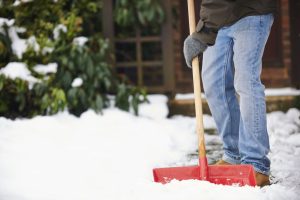 After our first nor’easter of the season, much of Massachusetts is now covered in a cold sheet of snow and ice. A total of 12.5 inches fell last weekend in part of Worcester County, while Middlesex County saw 2 to 7 inches of accumulation, according to MassLive.
After our first nor’easter of the season, much of Massachusetts is now covered in a cold sheet of snow and ice. A total of 12.5 inches fell last weekend in part of Worcester County, while Middlesex County saw 2 to 7 inches of accumulation, according to MassLive.
You may have shoveled, yet the work isn’t over. In these harsh New England winters, property owners must remember their legal responsibility to use reasonable care to keep their property safe. If you neglect to remove snow and ice from your driveway, someone could be injured and you could be held financially liable.
Commit to inspecting your property daily after a snow storm. Insect your driveway, walkways, roof and gutters. Go outside and walk from your front door to the end of your driveway and back. This is how your guests, mail carriers and package delivery professionals approach your home. This route needs to be safe.
A Property Owner’s Responsibility in Massachusetts
In Massachusetts, property owners have a duty to use reasonable care in clearing snow and ice so no one is injured. Papadopoulos v. Target Corp., 457 Mass. 368 (2010).
Papadopoulos v. Target Corp. changed more than 100 years of common law in Massachusetts and abolished the distinction between “natural” and “unnatural” snow and ice accumulations in premises liability actions. Property owners now have a duty to use the same reasonable care in treating snow and ice as they do other property hazards. It does not matter how the snow and ice accumulated. They owe a duty to all lawful visitors to use reasonable care to maintain their property in a reasonably safe condition.
How Often Should I Check My Driveway?
The best way to prevent a snow and ice injury is to treat snow regularly and promptly in the hours after a snowstorm, then also throughout the winter. This includes your driveway and walkways, as well as areas where cars, pedestrians and delivery trucks come in and out of the driveway. This activity can cause melting and refreezing for weeks after a storm.
Be aware of freezing and melting on other areas of your property as well, such as under roofs and gutters. Pay the most attention to your front step so delivery services and guests can safely access.
What if a Snow Plow Throws Snow on My Driveway?
It is still your responsibility to remove snow pushed onto your property so no one is injured. There is nothing more frustrating than shoveling your driveway, only for the plow to come back around a few minutes later. Again, the most effective response is to act quickly. Snow will be easier to shovel before it freezes to your driveway.
What If I Am Injured on Someone Else’s Property?
Use caution whenever you visit friends and family during the snow season. Try to find out if they have shoveled and salted their driveway and walkway before you visit. If you arrive and their driveway is iced over, consider visiting another time.
What if I am Injured on a Business Property?
Grocery stores and other businesses also have a responsibility to clear snow and ice and keep parking lots and other areas safe for travel after a snow storm. But there are times when snow and ice is left to accumulate or is not fully cleared. There are often several parties involved in commercial lease agreements, including a landlord, tenant and property management company. These parties may not always properly communicate or the party in charge of snow removal may be trying to save money. The party in charge may also not be experienced in hiring snow removal companies or realize the work involved.
When a business is negligent in clearing snow, slip and fall accidents can happen in parking lots. Another hazard is store floors and entrances. When snow melts, water accumulates and someone could slip and fall. A third danger is icy railings. Those in charge of the property have a responsibility to regularly inspect and remove snow and ice from railings, so a visitor doesn’t unknowingly reach for one and fall.
Since businesses can be open extended hours, property owners have a responsibility to address snow and ice accumulation promptly.
Be Aware of High Risk Areas for Mail Carriers and Package Delivery Professionals
Walk to the end of your driveway and make sure mail carriers and package delivery professionals can safely reach your front steps or mailbox.
Help the Elderly in Snow and Ice
The elderly are the most vulnerable to snow and ice injuries. If they fall, they are more likely to suffer long-term injuries. You can be proactive and prevent an injury by asking elderly friends, neighbors and family members if they need any help or anything at the grocery store. Encourage them to stay inside in the hours after a snow storm.
After a Snow and Ice Accident
If you are injured by a snow and ice accident, a doctor should evaluate you to determine if you fractured bones or suffered a concussion or other injuries.
If you were seriously injured, contact a lawyer and learn your legal rights. Contact a lawyer promptly. Under Massachusetts law, there is a limited time to notify a private property owner about injuries in cases involving snow and ice.
Free Legal Consultation – Boston Snow and Ice Accident Lawyer
With 100+ years combined experience, Breakstone, White & Gluck has been consistently recognized as a top-rated Boston personal injury law firm. Our attorneys have been recognized by Top 100 New England Super Lawyers, Top 100 Massachusetts Super Lawyers and Massachusetts Super Lawyers, in the specialties of personal injury and medical malpractice. The firm has also been recognized by U.S. News – Best Law Firms with Tier 1 rankings in personal injury and medical malpractice.
For a free legal consultation, contact Breakstone, White & Gluck at 800-379-1244 or 617-723-7676. You can also use our contact form.


